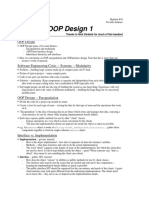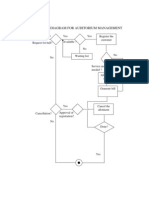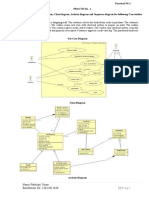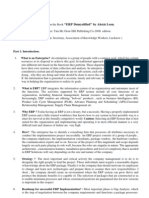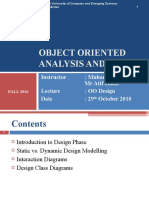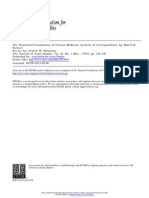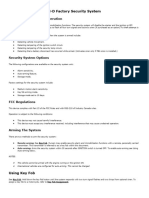0% found this document useful (0 votes)
96 views16 pagesLast Time: Boundary Object Responsibilities
The document discusses how a boundary object called StaffUI can be informed when application data managed by a control object called BookingSystem changes. It considers two approaches: polling and bidirectional coupling. The best solution is to use the Observer design pattern, where StaffUI implements a BookingObserver interface and registers with BookingSystem as an observer. When data changes, BookingSystem notifies the observer via its update() method. A simple Java implementation is provided as an example.
Uploaded by
studentscornersCopyright
© Attribution Non-Commercial (BY-NC)
We take content rights seriously. If you suspect this is your content, claim it here.
Available Formats
Download as PPT, PDF, TXT or read online on Scribd
0% found this document useful (0 votes)
96 views16 pagesLast Time: Boundary Object Responsibilities
The document discusses how a boundary object called StaffUI can be informed when application data managed by a control object called BookingSystem changes. It considers two approaches: polling and bidirectional coupling. The best solution is to use the Observer design pattern, where StaffUI implements a BookingObserver interface and registers with BookingSystem as an observer. When data changes, BookingSystem notifies the observer via its update() method. A simple Java implementation is provided as an example.
Uploaded by
studentscornersCopyright
© Attribution Non-Commercial (BY-NC)
We take content rights seriously. If you suspect this is your content, claim it here.
Available Formats
Download as PPT, PDF, TXT or read online on Scribd
/ 16












